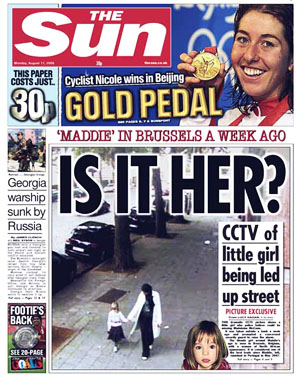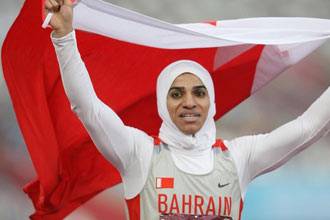The head of one of Venice’s most prestigious museums on Wednesday apologized to an Islamic woman who was asked to leave by a guard because she was wearing a head veil.
The episode, which sparked controversy in the Italian media and rows between centre-left and centre-right politicians, occurred last Sunday in Venice’s Ca’ Rezzonico museum, which houses 18th century Venetian art.
“I’m sorry for what happened and if she ever wants to return to our museum, she will be more than welcome,” director Filippo Pedrocco told Reuters by telephone from Venice. “She will be most welcome among all women,” he said.
The woman, who was visiting the famed museum with her husband and children, had already cleared security when she entered the building and had begun her visit. When she reached the second floor, a room guard told her she had to take off her “niqab”, a veil which leaves only the eyes visible, or leave.
“The room guard was over-zealous. He should not have done it. She already passed security and his only duty was to guarantee the safety of the artwork in his room,” Pedrocco said.
The woman was believed to have been part of a well-off family visiting Venice, one of Italy’s most expensive cities, from Saudi Arabia or a Gulf state.
She refused to take off her veil and left the building, which faces Venice’s Grand Canal and houses works by such 18th century Venetian masters as Giandomenico Tiepolo.

 A little girl who cops suspect could be Madeleine McCann asked a woman she was seen walking with, “Can we go back now?” it emerged last night.
A little girl who cops suspect could be Madeleine McCann asked a woman she was seen walking with, “Can we go back now?” it emerged last night. “The Greeks, as we all know, used to compete in the original Olympic games stark naked and smothered in olive oil. That’s no longer the fashion – because we have different cultural ideas about what parts of the body are suitable for public display – and, in fact, some women have taken the trend for Olympic modesty one stage further.
“The Greeks, as we all know, used to compete in the original Olympic games stark naked and smothered in olive oil. That’s no longer the fashion – because we have different cultural ideas about what parts of the body are suitable for public display – and, in fact, some women have taken the trend for Olympic modesty one stage further. The women in Roqaya Al Ghasara’s home town in Bahrain are so proud of their pioneering Olympic sprinter that some of them got together to design and sew a set of tailor-made aerodynamic veils for her to run in.
The women in Roqaya Al Ghasara’s home town in Bahrain are so proud of their pioneering Olympic sprinter that some of them got together to design and sew a set of tailor-made aerodynamic veils for her to run in.